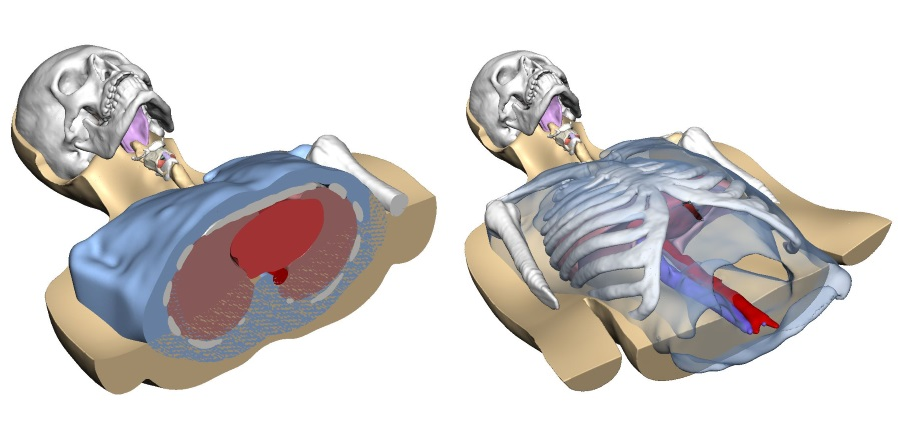
SAM 1.1 - Rugged Whole Body
With support from the Defence & Security Accelerator Open Call for Innovation we have begun the development of a rugged, waterproof, harness-lift capable human model, aligned with the existing Medical Emergency Response Team MERT Training Programme requirements, along with those of Field Hospital Units and Special Forces. Maintaining the knowledge, skills and performance attained by the Defence Medical Services in the Afghan Conflict is essential to protecting our Armed Forces most important assets, its personnel. However, the model will be relevant to civilian services such as HART and paramedic teams.
Two versions of the whole-body model are being created, each of which can be prepared with specific injury patterns (blast, ballistic, blunt or combined) appropriate to the scenario in question. Both will be rugged in construction and visually striking representations of the relevant injury patterns.
The simpler procedure training model will be "inanimate" but will enable the participants to execute all of the above interventions, with continuous bleeding simulated from carefully prepared complex wounds using special effects techniques for the greatest visual impact. The materials previously developed will be refined to assure they retain life-like handling properties (including physical weight, skin and tissue texture) while being rugged enough to withstand the physical demands of the simulation environment. Importantly the model will be capable of being ventilated, with the option of a replaceable section for performance of cricothyroidotomy.
The more complex animated version will contain all of these features, plus a mechanism to produce pulsatile bleeding and simulated spontaneous breathing. These features will be under the control of a simulation controller.
The key interventions simulated will be:
1. Securing control of catastrophic haemorrhage
2. Advanced Airway Intervention: rapid sequence induction intubation or cricothyroidotomy
3. Chest decompression: thoracotomy, tube or open or needle decompression
4. Intraosseous access: humeral access sites
5. Intravenous access: peripheral or central venous
6. Prehospital Blood: administration of red cell concentrate and plasma
The whole-body simulation models will be robust, customised to requirements and capable of being re-used to contain costs. The visual impact of the proposed models will be striking and their physical properties will assure that the anatomical landmarks used and the feel of the simulated tissues during each procedure faithfully prepare the participants for the real event.
- Ordering
- Brochure
For information on how to order one of our trauma simulator models please click here.






